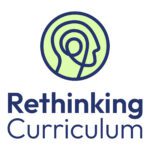Rethinking Curriculum: Place-based and community curriculum toolkit

This article has been published as part of the Rethinking Curriculum project, kindly funded by The Helen Hamlyn Trust.
What is place-based education?
Place-based education, also referred to as area-based education, is an umbrella term for pedagogical practices that prioritise experiential, community-based and contextual/ecological learning to cultivate greater connectivity to local contexts, cultures and environments. The purpose behind a place-based approach is to increase children’s and young people’s understanding of the place they live and embed schools more deeply within their communities. For example, students might learn about their city through visits to local museums (history), walking tours (geography) and school-based workshops from local entrepreneurs (business and enterprise).
According to the RSA (2012) an place-based approach to curriculum should ideally be:
- about a place: using local resources to build learning
- by a place: designed by schools and local partners
- for a place: meeting the needs of the children and the local community.
Place-based education is often associated with environmental education, project-based learning, problem-based learning and experiential learning; but what differentiates true place-based education is ‘its explicit focus on both human and natural environments and its concern with equity and social justice issues, as well as the environment’ (Smith, 2017). As far back as 1897, John Dewey linked the purpose of education with the wider societal benefits. He said ‘education is a process of living, and not a preparation for future living (Dewey, p. 78). This was in reaction to schools focussing on developing compliant workers when instead he felt that schools should be focussed upon raising citizens who can serve their communities, care for their land and run their governments. This is still echoed today in the UN publication of sustainable development goals (2015), which highlights the need to move beyond ‘compliance’, instead focusing on engagement and empowerment of communities.
References
Dewey J (1897) My pedagogic creed. The School Journal 54: 77-80.
Egan-Simon D (n.d.) Curriculum design: Area-based curriculum. MyCollege. Available at: https://my.chartered.college/research-hub/curriculum-design-area-based-curriculum/ (accessed 1 May 2023).
Royal Society of Arts (RSA) (2012) Thinking about an Area Based Curriculum: A guide for practitioners. London: RSA.
Smith G (2017) Place Based Education. Available at: https://oxfordre.com/education/display/10.1093/acrefore/9780190264093.001.0001/acrefore-9780190264093-e-95;jsessionid=8A3FEFDFC56A3F71E23209E14496A421 (accessed 16 August 2023).
United Nations (UN) (2015) 17 Sustainable Development Goals. United Nations. Available at: https://sdgs.un.org/goals (accessed on 1st May 2023).
Tools and resources
As part of the Rethinking Curriculum project, we have created a number of bespoke resources to develop your understanding of a place-based curriculum. These resources are designed to explore the research evidence underpinning this approach, understand what this could look like in practice and make informed decisions about whether this might be appropriate for your school and students.
We encourage you to engage with the following:
Read our research review
This review summarises some of the research evidence around place-based education, specifically exploring the impact and implications for primary school practice.
Read this case study
Siobhan Dell of Brocklewood Primary School has written a case study to share their journey in designing and implementing a place-based curriculum in their school. This case study could be used to understand the process further but is not intended to be replicated as we strongly believe that all schools should be delivering for their community and circumstances.
Read this case study
Kirsty Cooper, Headteacher at Grayrigg CE Primary School, shares her journey in designing and implementing a place-based curriculum in a small rural school in Cumbria. As above, this case study could be used to understand the curriculum design and implementation process further but not necessarily intended to be replicated.
Read this case study
Charlotte Norcup, Year 6 Teacher at Mill Hill Primary Academy, shares her journey collaborating with Operation Spitfire 4 Schools (OS4S). This programme is designed to enhance young people’s understanding of STEM and to instil a deeper sense of civic pride in their local area. Watch this webinar for further information about this exciting project.
Watch this webinar
We hosted a webinar with experts and practitioners – Julia Hancock, Jayne Rochford-Smith, Kirsty Cooper, Emma Littlewood and Siobhan Dell – to share their experiences of implementing place-based curricula in their primary settings. This recording could be re-watched with your school leadership or teaching teams to begin to explore the purpose and application of a place-based, community curriculum. To support with this, we have prepared a range of reflective questions to facilitate discussion and consider actions forward.
Watch this webinar
We hosted a webinar with ‘Operation Spitfire 4 Schools’, a dynamic, place-based project that brings history, engineering, science, and careers to life. With over 140 students involved in its initial pilot, the program has proven to significantly enhance scientific knowledge, skill development, engagement, and civic pride. Whether you’re an educator, school leader, or STEM enthusiast, this initiative showcases the power of place-based learning in shaping future innovators and fostering deep connections between education and community.
Use this evaluation tool
We have created an evaluation tool to be used with your school leadership teams to develop understanding of where your current curriculum is in terms of introducing and embedding a place-based focus to your curriculum. The aim of using this tool is to celebrate and acknowledge the work you are already doing but also to refine actions going forward.
This tool could help with reviewing the curriculum at a whole school level, ensuring that expectations of experiences within the curriculum are relevant and catered for effectively. It could also support teacher development in the planning and application of the delivery methods.
This tool is intended to be used alongside the Rethinking Curriculum Evaluation Framework.
Use this document to explore how this approach aligns with the National Curriculum
As part of this project, schools asked for a tool to map how specific curriculum approaches aligned with the current National Curriculum. We invite you to use this document to further develop and refine your curriculum vision.
Go further with our reading and resources list
We have created a list of further reading and resources to deepen your understanding of developing a place-based curriculum. These include academic research, case studies and webinars. We have ensured that all resources are open access or available to members of The Chartered College of Teaching.











